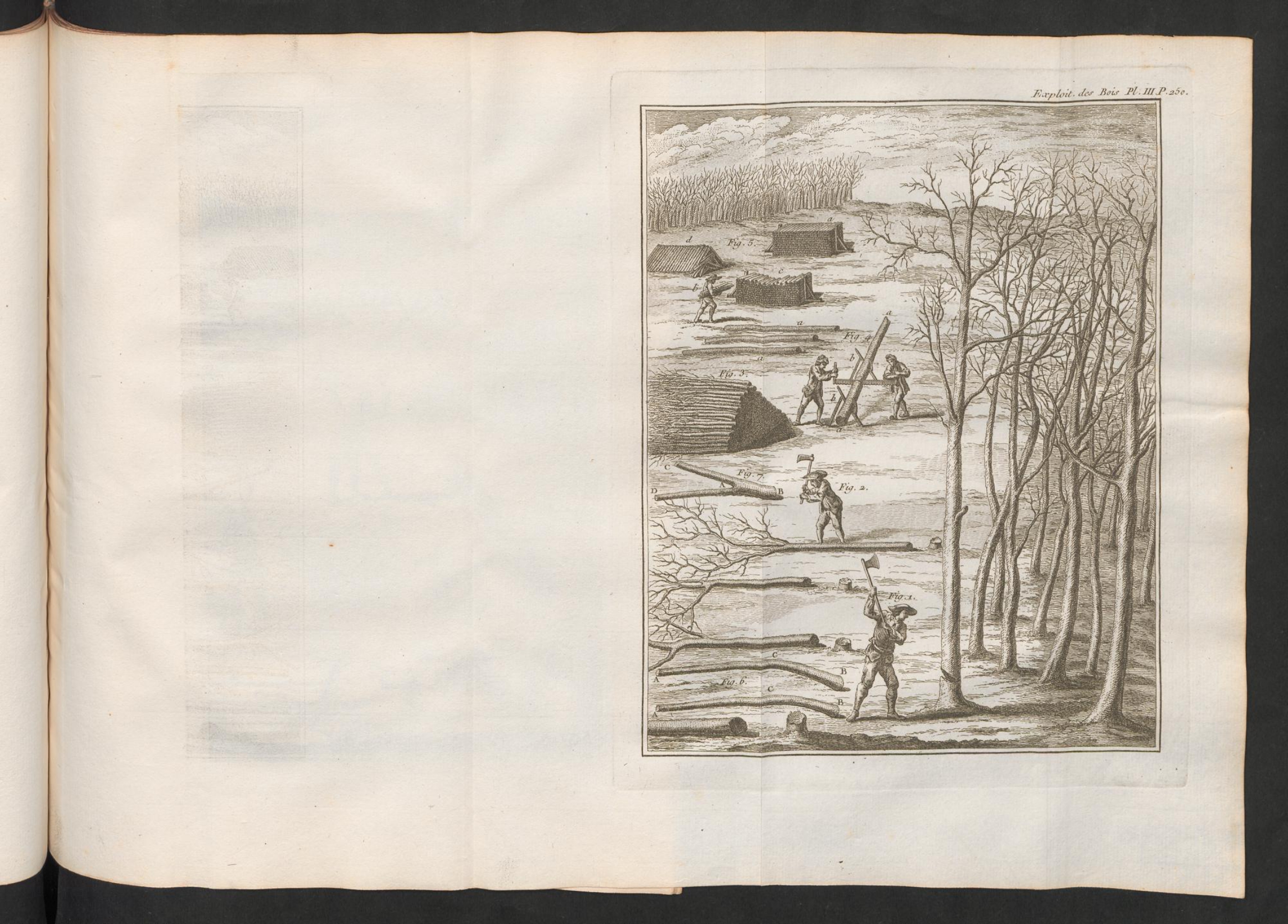PAST TALKS 2023
13 June 2023
DocTalks x MoMA
The Eighteenth-Century
MARTINA MOTTA
Politecnico di Torino
Respondent: Alberto Valz Gris, Politecnico di Torino
![]()
Henri Louis Duhamel du Monceau, De l'exploitation des bois, ou, Moyens de tirer un parti avantageux des taillis, demi-futaies et hautes-futaies, et d'en faire une juste estimation, Paris 1764-
***
Unimprovable Regularities
CAMILA MEDINA
LUS/ETH
Respondent: Kurt Pelzer, UCLA
![]()
︎︎︎ back to Past Talks 2023
DocTalks x MoMA
The Eighteenth-Century
Teatro Regio in Turin
A Forest Perspective
MARTINA MOTTA
Politecnico di Torino
Respondent: Alberto Valz Gris, Politecnico di Torino

Henri Louis Duhamel du Monceau, De l'exploitation des bois, ou, Moyens de tirer un parti avantageux des taillis, demi-futaies et hautes-futaies, et d'en faire une juste estimation, Paris 1764-
When we talk about Teatro Regio in Turin, we immediately think of the 1970s building renovation by modern architect Carlo Mollino: a sudden fire destroyed the eighteenth-century building in 1936. Designed by the First Royal Architect Benedetto Alfieri, the original theatre boasted a comparable avant-garde project. Indeed, the theater’s main hall was built with an extraordinary capacity for the time, responding to innovative visual and hearing solutions. The Teatro Regio became therefore a paradigm in the context of contemporary European theatrical achievements.
The historiographical research, however, has mostly focuses on the architectural artefact. If we do investigate where the carpentry’s timber came from, the history of the architecture expands beyond the time of construction and brings out new points of view. How did a forest work in the eighteenth century? What kind of manpower was required? How had centuries-old knowledge around the forest changed? Which human and non-human species were affected by the logging? Which local communities’ forms of resistance against the process of extraction?
Studying architecture through a forest perspective bears witness the events of construction to being intertwined with the natural environment and its exploitation, revealing a history of architecture that cannot be separated from the environmental one.
The historiographical research, however, has mostly focuses on the architectural artefact. If we do investigate where the carpentry’s timber came from, the history of the architecture expands beyond the time of construction and brings out new points of view. How did a forest work in the eighteenth century? What kind of manpower was required? How had centuries-old knowledge around the forest changed? Which human and non-human species were affected by the logging? Which local communities’ forms of resistance against the process of extraction?
Studying architecture through a forest perspective bears witness the events of construction to being intertwined with the natural environment and its exploitation, revealing a history of architecture that cannot be separated from the environmental one.
***
Unimprovable Regularities
The Araucaria Araucana Tree
in the Victorian Garden
CAMILA MEDINA
LUS/ETH
Respondent: Kurt Pelzer, UCLA

The Araucaria araucana tree (also called Pehuén or Monkey Puzzle) only grows naturally in the
Andean slopes of southern Chile and Argentina and in the Coastal Range of
Chile. It is admired for its height (up to 50 meters) and longevity (up to a
thousand years) and is deeply tied to the Mapuche-Pehuenche indigenous culture.
It was declared a Natural Monument in Chile in 1976 and 1990 and is informally
recognized as a national symbol. For their part, Europeans, especially the
British, perceives it as a usual (and sometimes old-fashioned) species from old
parks and suburban gardens. Unlike other imperial transplantations, the Araucaria araucana was imported into Great Britain for ornamental use. By following a specific
species, the research offers tangible —complex and sometimes ordinary but not less
important— evidence of broader processes related to the domestic scale of
imperialism, the nursery market, gardeners, and scientist practice and
language, among others. In other words, this research is not about the Araucaria araucana itself but its displacement as evidence of a broader dialogue between gardening,
science, and coloniality.
Specifically, this presentation will focus on 19th-century illustrations. Drawings, paintings, and engravings, among others, as methods of visualization of nature, were essential for constructing and disseminating knowledge during the eighteenth and nineteenth centuries. The production of plant illustrations not only facilitated their recognition and classification but also their distinction for potential use. In this context, the presentation focuses on the Araucaria araucana species and its appearance in British publications. In this instance, we will center on John Claudius Loudon's Arboretum et Fruticetum Britannicum (1844). The aim is to illuminate the historical understanding of exotic tree species in the English garden, to visualize the influence of scientific language and methodology on gardening, and to open the reflection on the relationship between ornament and science and their role in plant migration.
Specifically, this presentation will focus on 19th-century illustrations. Drawings, paintings, and engravings, among others, as methods of visualization of nature, were essential for constructing and disseminating knowledge during the eighteenth and nineteenth centuries. The production of plant illustrations not only facilitated their recognition and classification but also their distinction for potential use. In this context, the presentation focuses on the Araucaria araucana species and its appearance in British publications. In this instance, we will center on John Claudius Loudon's Arboretum et Fruticetum Britannicum (1844). The aim is to illuminate the historical understanding of exotic tree species in the English garden, to visualize the influence of scientific language and methodology on gardening, and to open the reflection on the relationship between ornament and science and their role in plant migration.